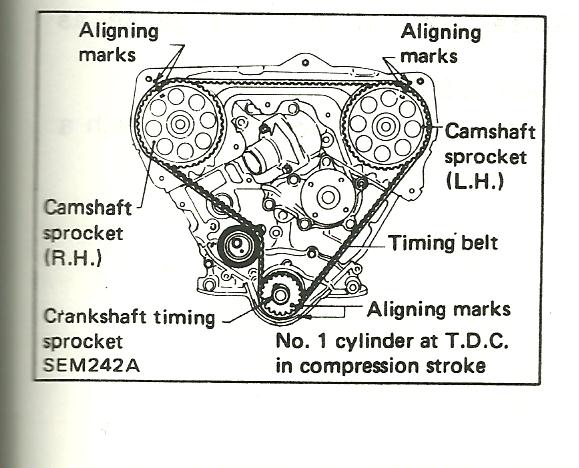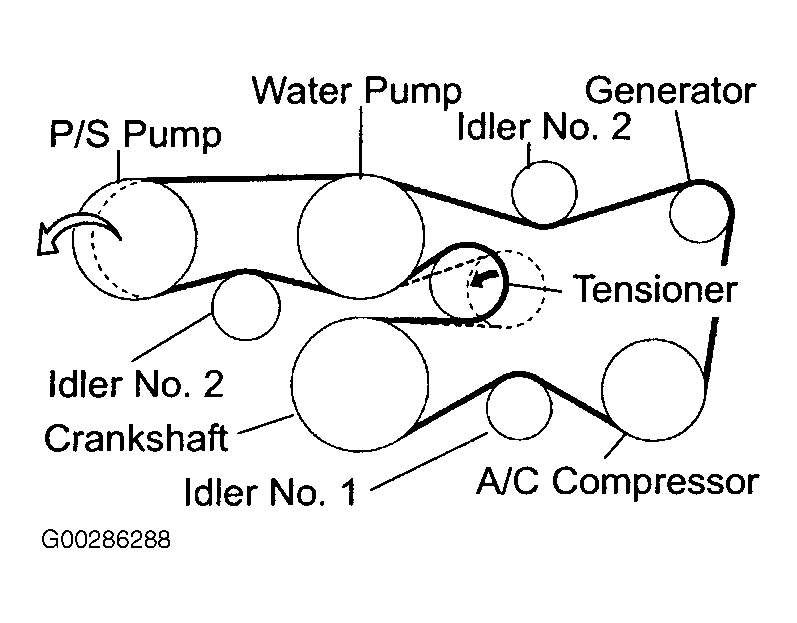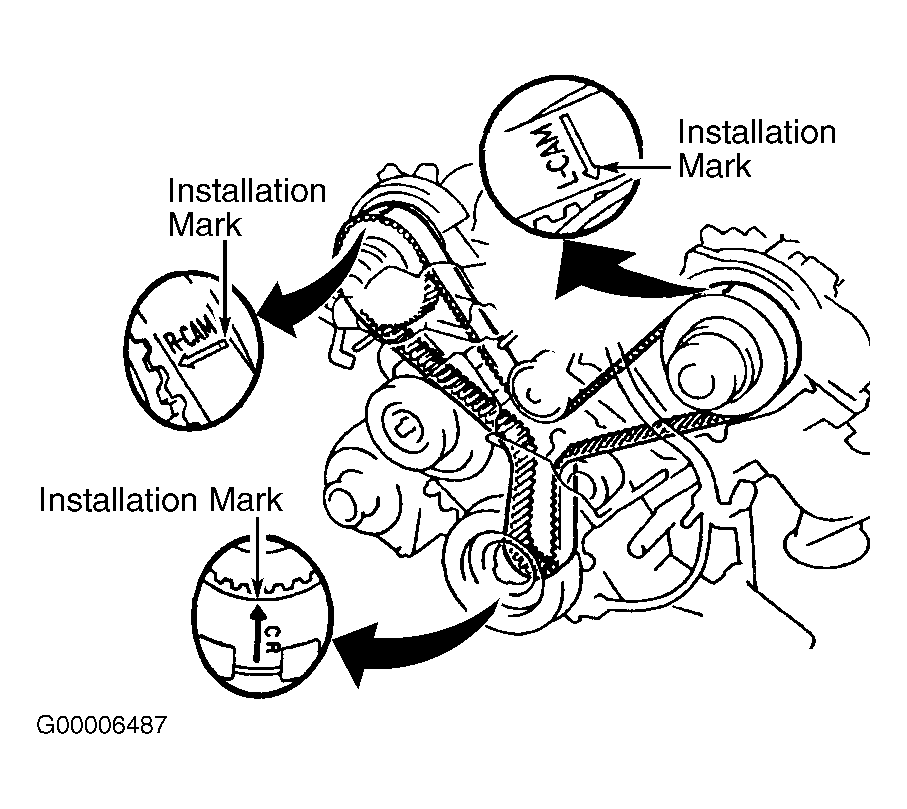The Heartbeat Of The Toyota 4Runner: Understanding The Timing Belt
The Heartbeat of the Toyota 4Runner: Understanding the Timing Belt
Related Articles: The Heartbeat of the Toyota 4Runner: Understanding the Timing Belt
Introduction
In this auspicious occasion, we are delighted to delve into the intriguing topic related to The Heartbeat of the Toyota 4Runner: Understanding the Timing Belt. Let’s weave interesting information and offer fresh perspectives to the readers.
Table of Content
The Heartbeat of the Toyota 4Runner: Understanding the Timing Belt

The Toyota 4Runner, a rugged and reliable SUV, has earned its reputation for durability and off-road prowess. But like any complex machine, it relies on meticulously synchronized components to function optimally. At the heart of this intricate system lies the timing belt, an often overlooked yet critically important component. This unassuming rubber band plays a vital role in the engine’s smooth operation, ensuring the precise timing of valves and pistons.
The Importance of Precise Timing
The internal combustion engine, the power source of the 4Runner, relies on a delicate dance of moving parts. The pistons, driven by the combustion of fuel, travel up and down inside cylinders. Meanwhile, valves open and close, controlling the flow of air and exhaust gases. The timing belt orchestrates this complex ballet, ensuring the valves open and close at precisely the right moment, allowing for efficient combustion and optimal power delivery.
Understanding the Timing Belt’s Function
The timing belt is a toothed rubber belt that wraps around a series of pulleys or sprockets, connected to the crankshaft and camshafts. The crankshaft, connected to the pistons, rotates the timing belt, which in turn rotates the camshafts. The camshafts, through a system of lobes and followers, control the opening and closing of the valves.
The Consequences of a Failed Timing Belt
The timing belt, despite its robust construction, is susceptible to wear and tear. Over time, the rubber can become brittle, crack, or even snap. When this occurs, the delicate timing of the engine is disrupted, leading to catastrophic consequences:
- Valve-to-piston contact: Without the timing belt’s precise control, valves can open at the wrong time, colliding with the moving pistons. This collision can result in severe damage to the engine, requiring costly repairs.
- Engine seizure: The disrupted timing can also lead to the engine seizing, rendering it completely inoperable.
- Extensive damage: A failed timing belt can cause damage to other engine components, including the crankshaft, camshafts, and connecting rods, requiring extensive and expensive repairs.
Recognizing the Signs of a Failing Timing Belt
While a snapped timing belt is a sudden and dramatic failure, there are often warning signs that indicate a belt nearing the end of its life. These signs include:
- Engine noises: A ticking or rattling sound from the engine could indicate a worn or loose timing belt.
- Rough idling: A rough or uneven idle could signify problems with the engine’s timing.
- Loss of power: A noticeable decrease in engine power could be a symptom of a failing timing belt.
- Check engine light: The check engine light illuminating, accompanied by a specific code related to timing, could indicate an issue with the timing belt.
The Importance of Regular Maintenance
To prevent catastrophic engine failure, it is crucial to adhere to the manufacturer’s recommended timing belt replacement intervals. Toyota typically recommends replacing the timing belt every 90,000 to 105,000 miles, depending on the specific model year and engine type. However, it is essential to consult the owner’s manual for the exact interval for your 4Runner.
Beyond the Manufacturer’s Recommendations
While following the manufacturer’s guidelines is essential, it is also prudent to consider factors that can influence the timing belt’s lifespan:
- Driving conditions: Driving in extreme temperatures, dusty environments, or harsh off-road conditions can accelerate the wear and tear on the timing belt.
- Driving style: Aggressive driving, frequent hard acceleration, and towing heavy loads can also put additional stress on the timing belt.
- Maintenance history: Regular maintenance, including oil changes and engine tune-ups, can help extend the life of the timing belt.
The Cost of Neglecting Timing Belt Replacement
Replacing a timing belt is a preventative measure that can save you significant time and money in the long run. Ignoring the recommended replacement interval can lead to catastrophic engine damage, resulting in costly repairs or even engine replacement.
FAQs about Toyota 4Runner Timing Belts
1. How often should I replace the timing belt in my Toyota 4Runner?
The recommended replacement interval for the timing belt varies depending on the specific model year and engine type. Consult your owner’s manual for the exact interval for your vehicle.
2. What are the signs of a failing timing belt?
Common signs include engine noises, rough idling, loss of power, and the check engine light illuminating with a timing-related code.
3. How much does it cost to replace a timing belt?
The cost of replacing a timing belt varies depending on the specific model, labor costs, and parts used. However, it is generally a more affordable preventative measure than dealing with catastrophic engine failure.
4. Can I replace the timing belt myself?
Replacing a timing belt is a complex procedure that requires specialized tools and knowledge. It is generally recommended to have the replacement performed by a qualified mechanic.
5. Can I drive my 4Runner with a worn timing belt?
Driving with a worn timing belt increases the risk of catastrophic engine failure. It is crucial to replace the timing belt before it reaches the end of its life.
Tips for Maintaining Your Toyota 4Runner’s Timing Belt
- Adhere to the manufacturer’s recommended replacement interval.
- Be aware of the signs of a failing timing belt.
- Maintain regular engine maintenance, including oil changes and tune-ups.
- Consider replacing the timing belt sooner if you drive in extreme conditions or engage in frequent heavy towing.
Conclusion
The timing belt is a critical component in the Toyota 4Runner’s engine system, ensuring the precise timing of valves and pistons for optimal performance. While it may be a hidden component, neglecting its maintenance can lead to catastrophic engine damage. By adhering to the manufacturer’s recommendations and being vigilant for signs of wear, you can ensure the longevity and reliability of your 4Runner’s engine. Remember, preventative maintenance is the key to a trouble-free driving experience.






Closure
Thus, we hope this article has provided valuable insights into The Heartbeat of the Toyota 4Runner: Understanding the Timing Belt. We appreciate your attention to our article. See you in our next article!
You may also like
Recent Posts
- The 2025 Toyota 4Runner: A Legacy Reimagined
- The Enduring Appeal Of The Toyota 4Runner Manual Transmission 4×4
- The Toyota 4Runner TRD Off-Road: A Legacy Of Adventure, Reimagined For 2025
- The Anticipation Builds: Unveiling The Next Generation Toyota 4Runner
- The 2025 Toyota 4Runner TRD: A Legacy Of Adventure Reimagined
- The Future Of Color: Exploring The Significance Of Color Trends
- The Toyota 4Runner: A Legacy Of Capability, Now With Expanded Seating
- The Toyota 4Runner Timing Belt: A Vital Component For Engine Longevity
Leave a Reply